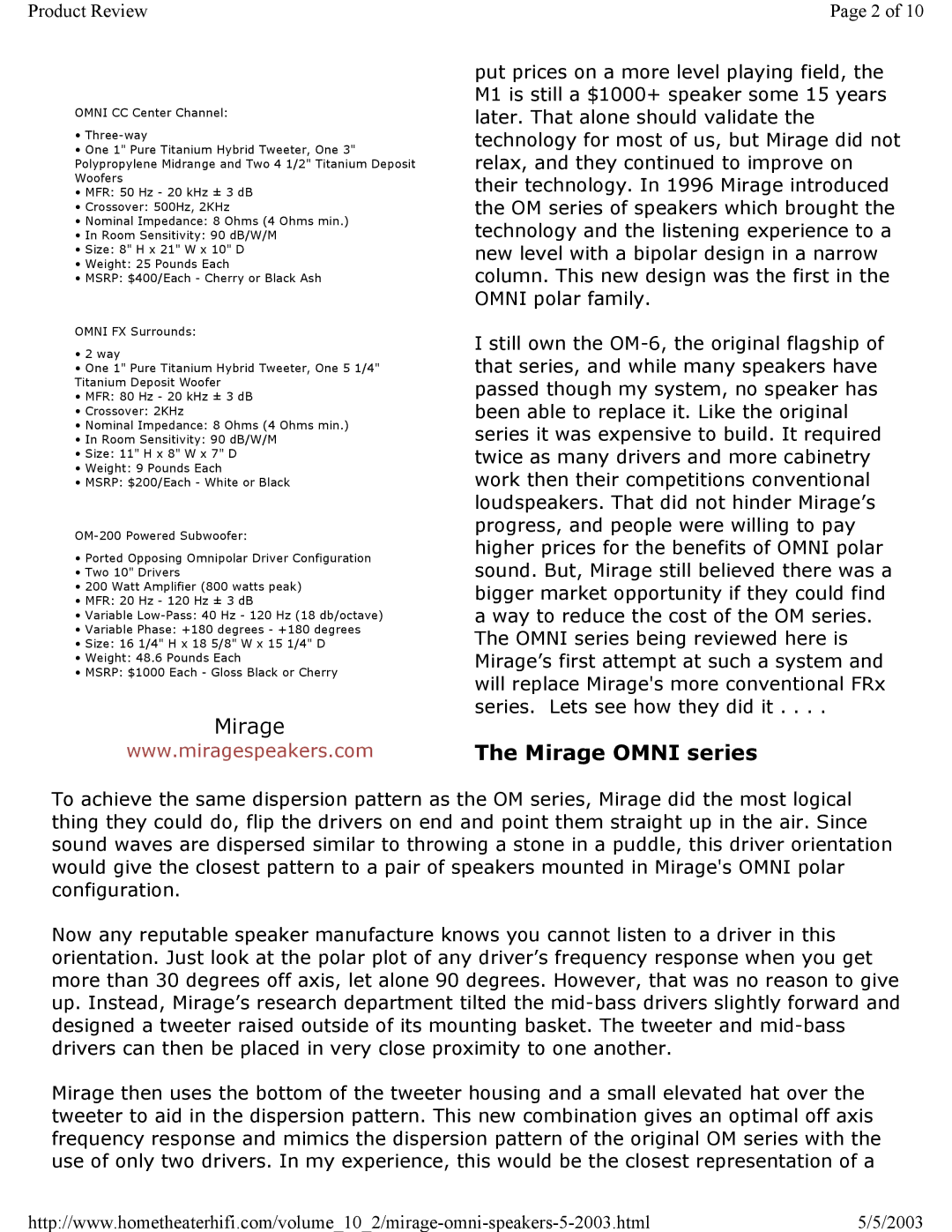OMNI 5.1 specifications
The Mirage Loudspeakers OMNI 5.1 system represents a significant advancement in home audio technology, designed to deliver an immersive surround sound experience. This upscale speaker system combines an elegant aesthetic with cutting-edge acoustics, making it a great choice for audiophiles and casual listeners alike.One of the standout features of the OMNI 5.1 is its unique OMNI directional design. This technology allows the speaker to produce sound in all directions, creating a three-dimensional audio field that envelops the listener. This omnidirectional soundstage ensures that every seat in the room enjoys a uniform listening experience, eliminating the typical sweet spot limitation found in traditional speaker systems.
The OMNI 5.1 package includes a total of five speakers, comprising four satellite speakers and one powerful subwoofer. The satellites are designed with a sleek profile that can blend seamlessly into any décor. Each satellite features high-quality drivers that reproduce a broad range of frequencies, resulting in crystal-clear highs and rich mid-range sounds. The full-range performance of the satellites ensures that dialogues in films and music alike are reproduced accurately and without distortion.
At the heart of the OMNI 5.1 system is an advanced digital signal processing technology that optimizes audio playback based on your room’s characteristics. This feature tailors the sound to the listening environment, allowing for enhanced clarity and detail. Additionally, the subwoofer is engineered to deliver deep, impactful bass, which significantly enhances cinematic audio and music experiences.
The installation of the OMNI 5.1 is straightforward, thanks to its plug-and-play design. The included mounting hardware allows for versatile placement options, whether on stands, walls, or shelves. This ease of configuration ensures that users can set up their systems without hassle, adapting the layout to their space needs.
Moreover, the OMNI 5.1 is compatible with a variety of audio sources, making it an adaptable option for modern entertainment systems. With its impressive range of features, distinctive technology, and modern styling, the Mirage Loudspeakers OMNI 5.1 system stands out as a top choice for anyone seeking a high-quality home audio solution that delivers an exceptional listening experience.
